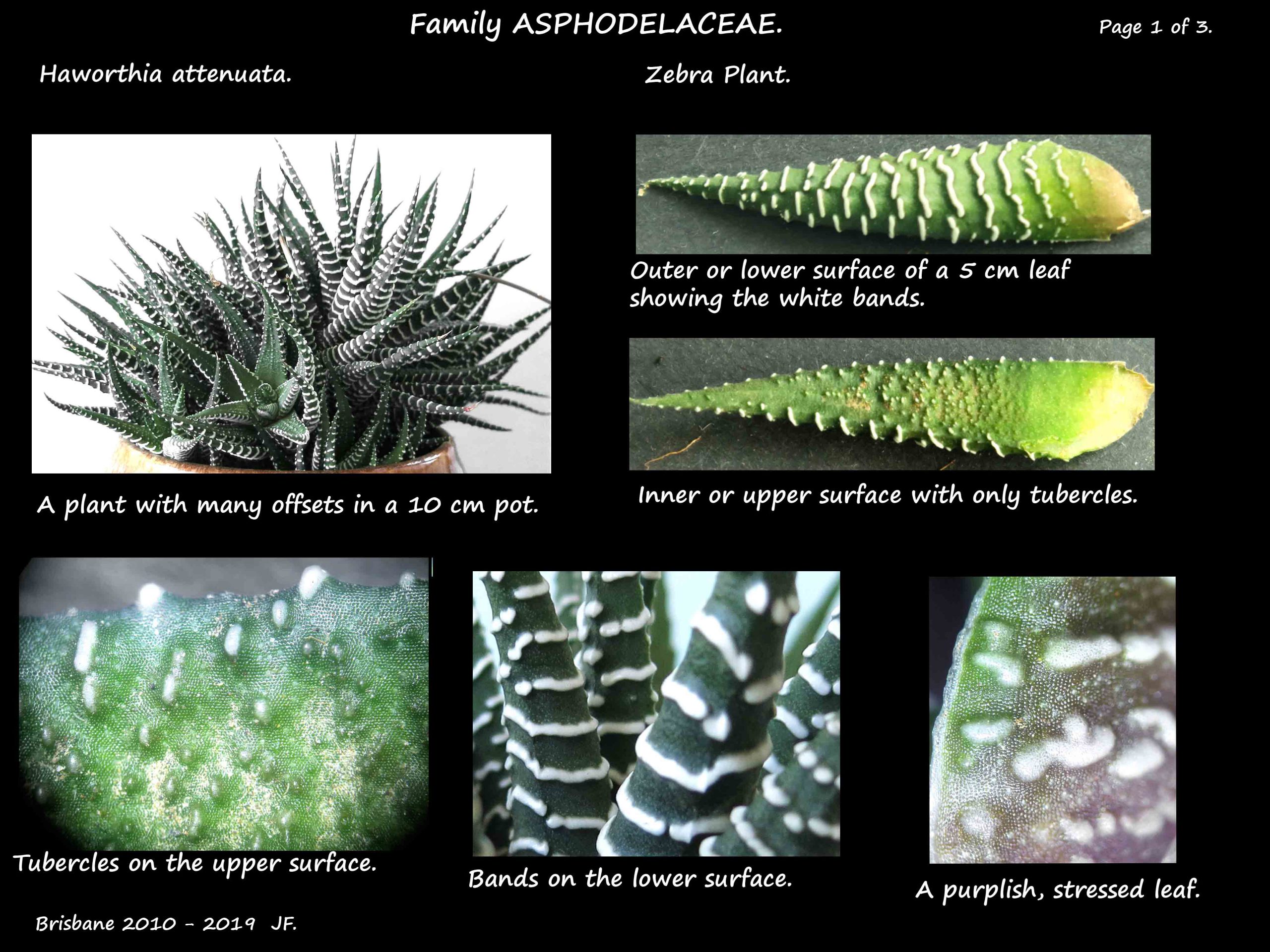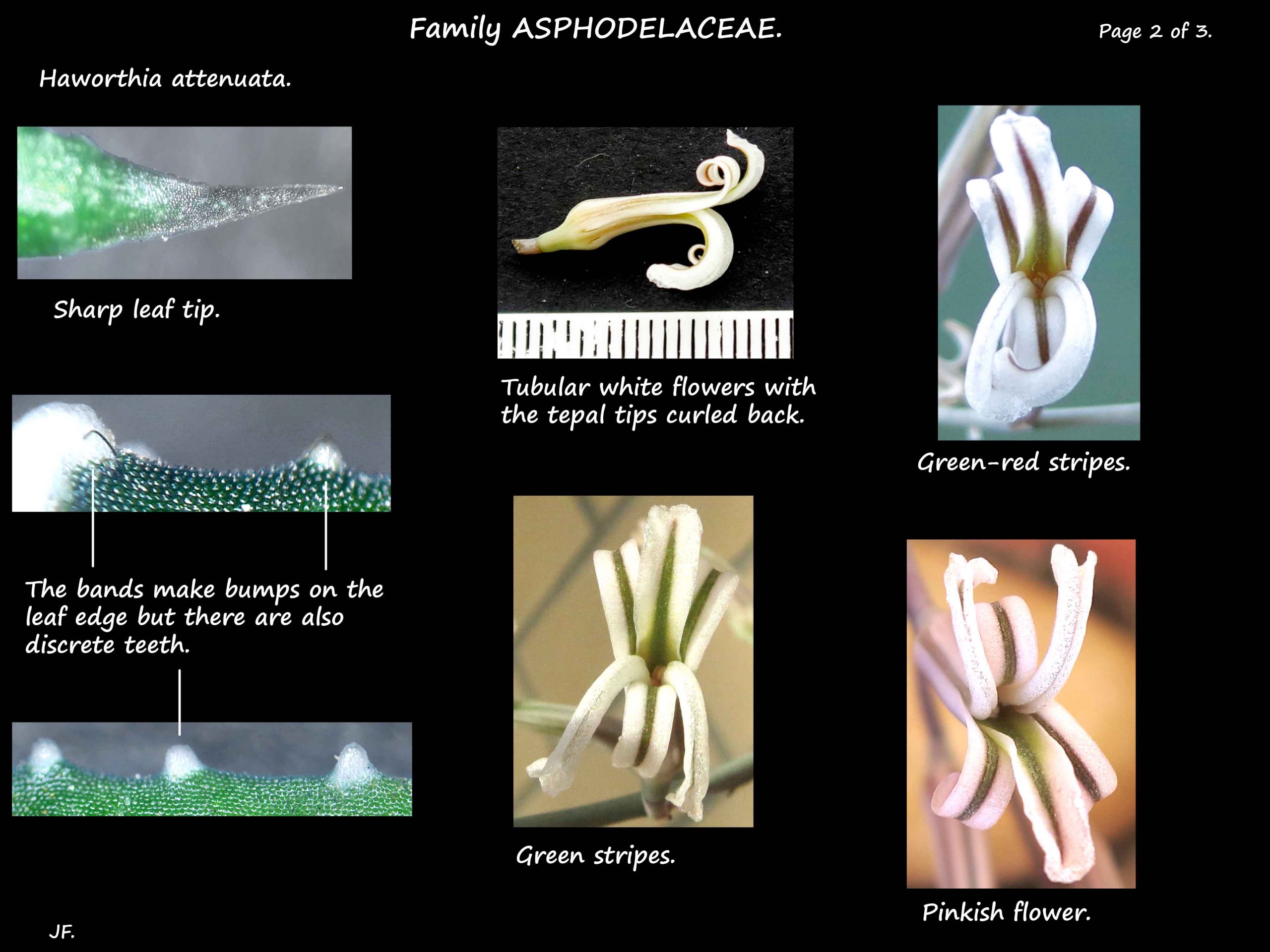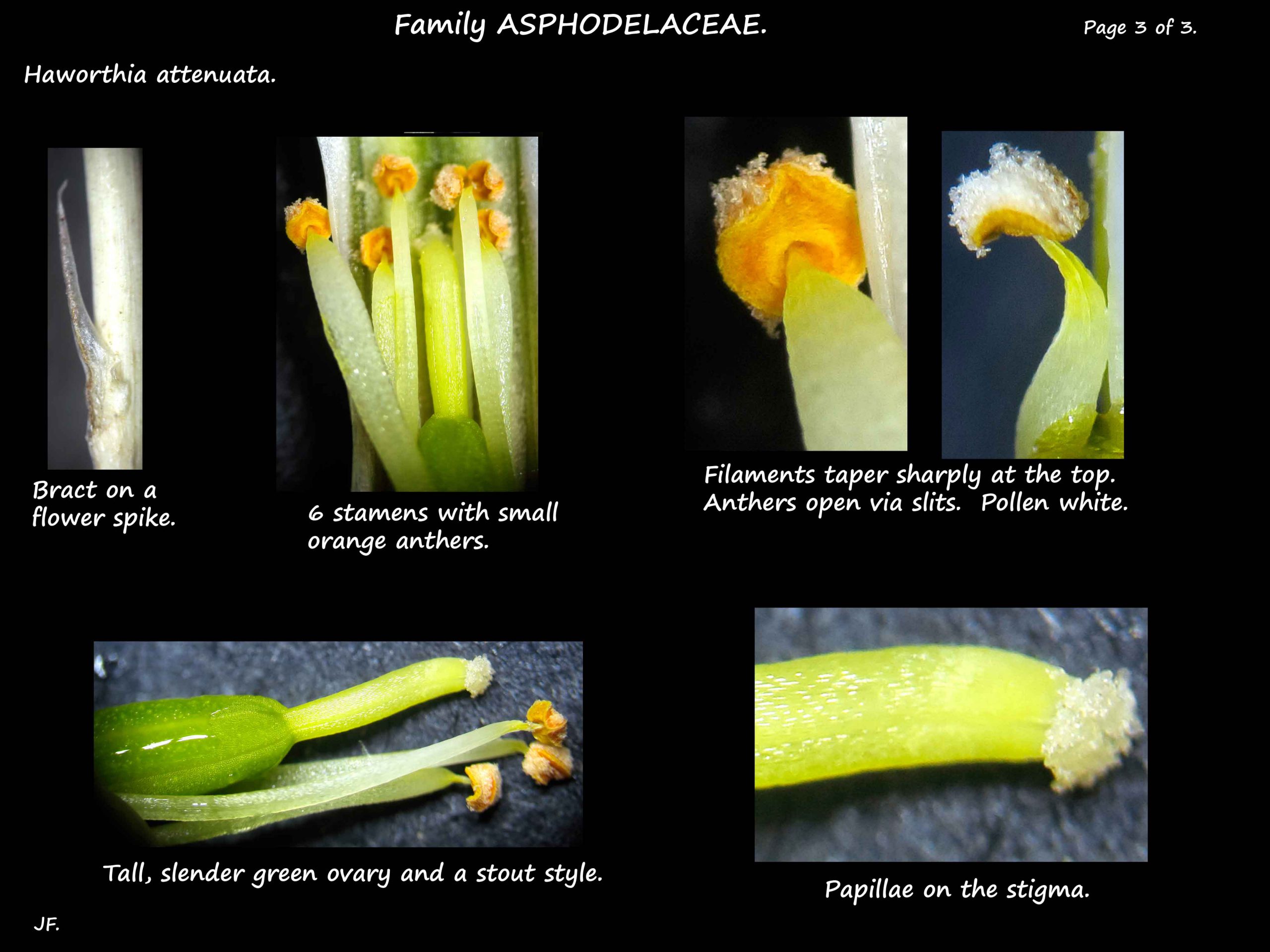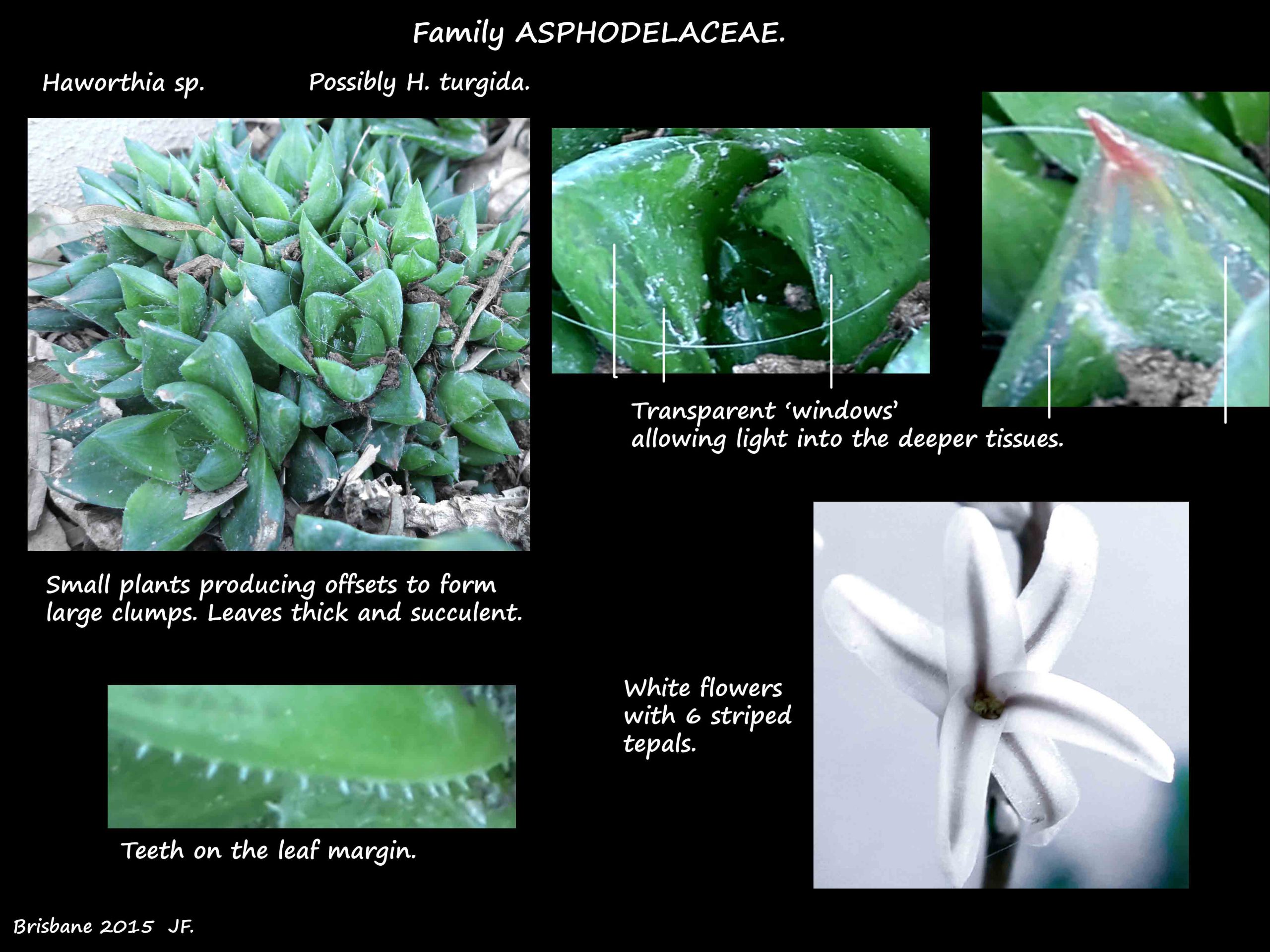Haworthia attenuata.
This is one of the 2 species commonly known as Zebra plants.
H. attenuata is a variable species and a number of subspecies are described.
The fleshy basal leaves form tight rosettes about 10 cm high and 15 cm wide.
It has an extensive root system.
It easily forms offsets or pups leading to large colonies.
The triangular or lanceolate, fleshy, dark green leaves are up to 7 cm long.
They are slightly concave with a sharply pointed tip.
In young leaves both surfaces have green then white, warty tubercles.
In older leaves the tubercles on the lower or outer surface join to form transverse white bands.
Those on the inner or upper surface remain discrete nodules.
The number and appearance of the bands and tubercles varies from plant to plant.
H. attenuata has very small teeth on the leaf edge.
(The similar H. fasciata only has tubercles and bands on the lower or outer surface.)
Thin unbranched inflorescence spikes, up to 35 cm high, hold a few terminal flowers.
The greenish-white flowers have 6 tepals in 2 whorls.
The fruit are capsules.
JF.





